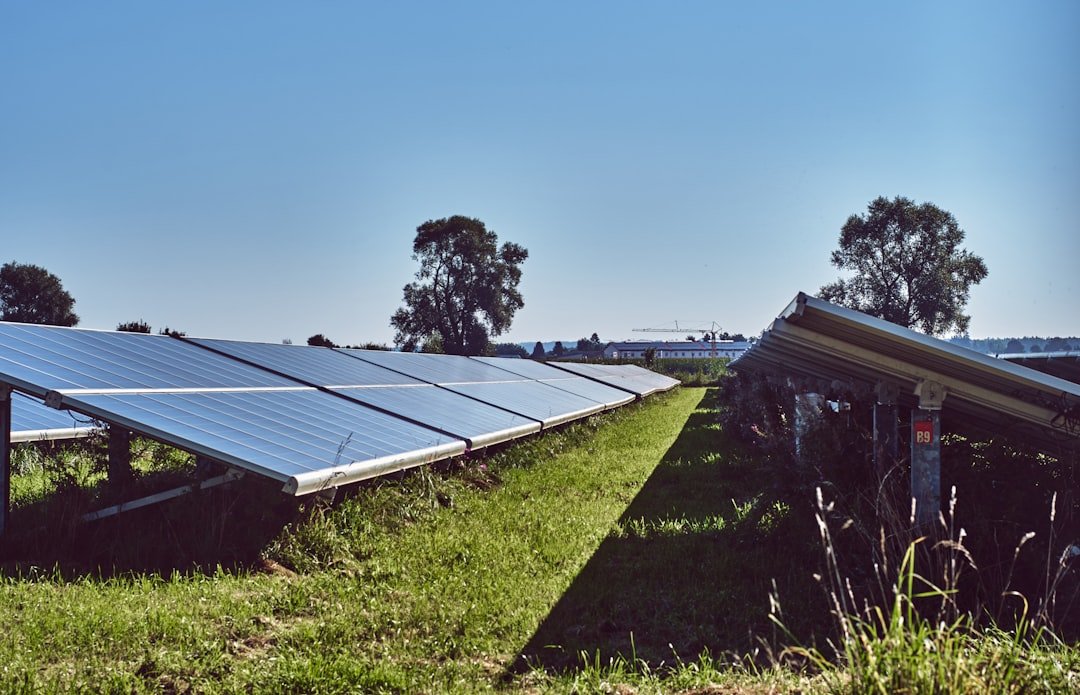Understanding Criteria Air Pollutants: Effects, Sources, and Solutions The US Environmental Protection Agency (EPA) has determined that a set of particular air pollutants known as criteria air pollutants pose serious risks to the environment and public health. Because of their pervasiveness & potential for negative consequences, these pollutants are tracked and controlled. Particulate matter (PM), carbon monoxide (CO), sulfur dioxide (SO2), nitrogen dioxide (NO2), ground-level ozone (O3), and lead (Pb) are the six main criteria air pollutants. Because of their unique origins, traits, & potential health effects, these pollutants are important targets for air quality control. “Criteria” refers to the standards that the EPA has set in order to promote environmental and human health protection. Numerous scientific studies that assess the impacts of these pollutants on a range of populations—including vulnerable ones like children, the elderly, & people with pre-existing medical conditions—form the basis of these standards.
Key Takeaways
- Criteria air pollutants are a group of six common air pollutants regulated by the Clean Air Act, including ozone, particulate matter, carbon monoxide, sulfur dioxide, nitrogen dioxide, and lead.
- Health effects of criteria air pollutants include respiratory issues, cardiovascular problems, and even premature death, particularly in vulnerable populations such as children, the elderly, and those with pre-existing health conditions.
- Sources of criteria air pollutants include vehicle emissions, industrial processes, power plants, and natural sources such as wildfires and volcanic eruptions.
- Monitoring and regulation of criteria air pollutants is carried out by government agencies such as the Environmental Protection Agency (EPA) through air quality monitoring networks and setting air quality standards.
- Common examples of criteria air pollutants include smog, soot, and toxic gases, which can be harmful when inhaled and can also contribute to environmental damage such as acid rain and climate change.
- Strategies for reducing criteria air pollutants include improving fuel efficiency, using cleaner energy sources, implementing emission controls, and promoting public transportation and active transportation options.
- The role of individuals in reducing criteria air pollutants involves making environmentally conscious choices such as carpooling, using energy-efficient appliances, reducing waste, and advocating for clean air policies.
- The future of criteria air pollutant regulation involves continued research and technological advancements to further reduce emissions and improve air quality, as well as increasing public awareness and participation in environmental protection efforts.
Through the identification and regulation of these pollutants, the EPA seeks to protect public health and enhance air quality nationwide. Risks to the heart and lungs. For example, particulate matter can find its way deep into the lungs & even into the bloodstream, causing cardiovascular issues, respiratory illnesses, and early mortality. According to studies, chronic exposure to high PM levels can worsen asthma, raise the risk of heart attacks, and worsen chronic obstructive pulmonary disease (COPD). Ground Level Ozone: A Danger to the Respiratory System.
Another important criteria pollutant that is known to cause respiratory problems like coughing, throat irritation, and decreased lung function is ground-level ozone. It can also make pre-existing illnesses like bronchitis and asthma worse. Particularly at risk are vulnerable groups, such as children and people with underlying respiratory disorders. The cumulative effects of air contamination.
Affected people may experience a decrease in their general quality of life, more hospital visits, and higher healthcare expenses as a result of these pollutants’ cumulative effects. There are numerous natural and man-made sources of criteria air pollutants. Particulate matter, for instance, can be released by industrial operations, construction sites, automobile exhaust, and even natural occurrences like volcanic eruptions & wildfires. Since PM levels can vary greatly depending on location & weather, it is difficult to effectively control them due to the variety of sources. The origins of other criteria pollutants are more precise.
| Pollutant | Primary Sources | Health Effects | Regulatory Standard |
|---|---|---|---|
| Ozone (O3) | Vehicle exhaust, industrial emissions | Respiratory issues, reduced lung function | 0.070 ppm (8-hour average) |
| Particulate Matter (PM2.5) | Vehicle exhaust, industrial processes | Asthma, heart disease, lung cancer | 12 μg/m3 (annual average) |
| Nitrogen Dioxide (NO2) | Vehicle emissions, power plants | Respiratory issues, increased susceptibility to respiratory infections | 0.053 ppm (annual average) |
| Sulfur Dioxide (SO2) | Industrial processes, power plants | Respiratory issues, cardiovascular problems | 0.03 ppm (1-hour average) |
Instead of being released directly, ground-level ozone is created when sunlight interacts with nitrogen oxides (NOx) & volatile organic compounds (VOCs). Chemical solvents, industrial facilities, and vehicle emissions are common sources of these precursors. Similarly, the main source of sulfur dioxide is the burning of fossil fuels in factories and power plants. It is essential to comprehend these sources in order to create focused plans to lower emissions & enhance air quality.
Important elements of environmental protection initiatives include the monitoring and control of criteria air pollutants.
This information is essential for determining areas that might need more regulatory actions and evaluating adherence to national air quality standards. The EPA is authorized to establish National Ambient Air Quality Standards (NAAQS) for every criterion pollutant by regulatory frameworks like the Clean Air Act.
These guidelines set acceptable exposure levels in an effort to safeguard the environment & public health. States must create State Implementation Plans (SIPs) outlining their strategies for meeting & upholding these standards. The effective management of air quality depends on federal & state agencies working together. Particulate matter is frequently divided into two primary categories among the six criteria air pollutants: PM10 (particles with a diameter of 10 micrometers or less) & PM2.5 (particles with a diameter of 2.5 micrometers or less). Because PM2.5 can enter the bloodstream and travel deep into the lungs, it can cause serious health problems.
This makes it especially dangerous. During the warmer months when sunlight is plentiful, ground-level ozone is another prevalent example that presents serious problems for urban areas. It frequently gets worse in cities due to stagnant air and high temperatures, which causes smog to form. The main source of carbon monoxide is incomplete burning of fossil fuels, which can build up in enclosed areas and be extremely harmful if inhaled in large quantities.
Sulfur dioxide is commonly linked to industrial processes and the production of electricity by coal-burning power plants. Ground-level ozone is formed in part by nitrogen dioxide, which is mostly released from automobile exhaust. Finally, because it is used in gasoline, lead has historically been a major pollutant; however, standards have significantly decreased its environmental presence.
It takes a multipronged strategy that includes public awareness campaigns, regulatory actions, and technology advancements to reduce criteria air pollutants. Making the switch to greener energy sources like hydroelectric, solar, and wind is one successful tactic. Reducing the use of fossil fuels to generate electricity can greatly reduce emissions of nitrogen oxides & sulfur dioxide.
Emissions from the transportation sector can also be reduced by encouraging electric cars and public transportation. Reducing levels of carbon monoxide and nitrogen dioxide can also be achieved by enforcing stronger fuel efficiency regulations for automobiles. Also, significant reductions in particulate matter & other hazardous emissions can result from enticing industries to adopt cleaner production methods through incentives or regulations. In order to encourage community involvement in air quality issues, public awareness campaigns are equally crucial. Giving people knowledge about the causes and health consequences of specific air pollutants can enable them to make decisions that will help create cleaner air.
Even small steps, like cutting back on driving on days with high pollution or lending support to regional clean air projects, can have a big effect. Due to their everyday decisions and actions, people can significantly lower the levels of certain air pollutants. Air quality can be considerably improved by making small lifestyle adjustments. For example, using public transportation, carpooling, biking, or walking rather than driving alone can significantly lower vehicle emissions.
People can also support renewable energy initiatives in their communities and select energy-efficient appliances.
For instance, avoiding dust-producing activities or restricting outdoor exercise during peak ozone hours can help improve the quality of the air. People can also participate in community clean-up events or speak with representatives of their local government to advocate for policies that support clean air initiatives.
By buying goods from companies dedicated to lessening their environmental impact, consumers can further support companies that place a high priority on sustainability. The demand for cleaner technologies and practices that eventually improve air quality can be increased by individuals making thoughtful purchasing decisions. Technological developments, the growing scientific understanding of the effects of air quality, & growing public awareness of environmental issues will probably influence the future of criteria air pollutant regulation. To guarantee sufficient protection for vulnerable groups, regulatory bodies may need to modify current standards or create new ones in light of new information about the health effects of different pollutants.
Future regulations will also be significantly shaped by technological advancements. Criteria pollutants can be significantly reduced by the development of more effective emission control technologies for automobiles and industries. Also, improvements in monitoring technology will make it possible to track pollutant levels more precisely in real time, enabling prompt responses to new problems with air quality. Effective regulation will still be fueled by public participation.
There will probably be more pressure on lawmakers to give air quality projects top priority as communities realize how important clean air is. Developing long-term solutions that safeguard public health and promote economic growth will require cooperation from government agencies, businesses, non-profits, and private citizens. In summary, addressing the effects of air pollutants on the environment and human health requires an understanding of their criteria. It is possible to drastically cut these pollutants and work toward a healthier future for everybody by working together at the individual, community, and governmental levels.
According to a recent article on global greenhouse gas emissions, the release of criteria air pollutants plays a significant role in contributing to the overall increase in greenhouse gases. These pollutants, such as sulfur dioxide and nitrogen oxides, not only have harmful effects on human health but also contribute to the warming of the planet. As discussed in another related article on unprecedented global climate change effects, it is crucial to address the sources of criteria air pollutants in order to mitigate their impact on the environment and human health. By harnessing nature’s power, as explored in the article on green greenhouse effect, we can work towards reducing criteria air pollutants and combating climate change.



